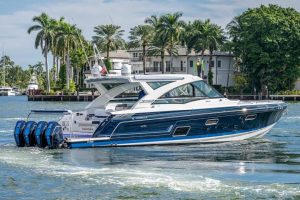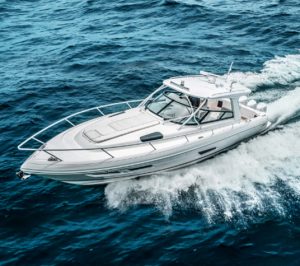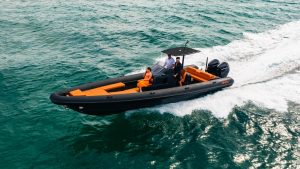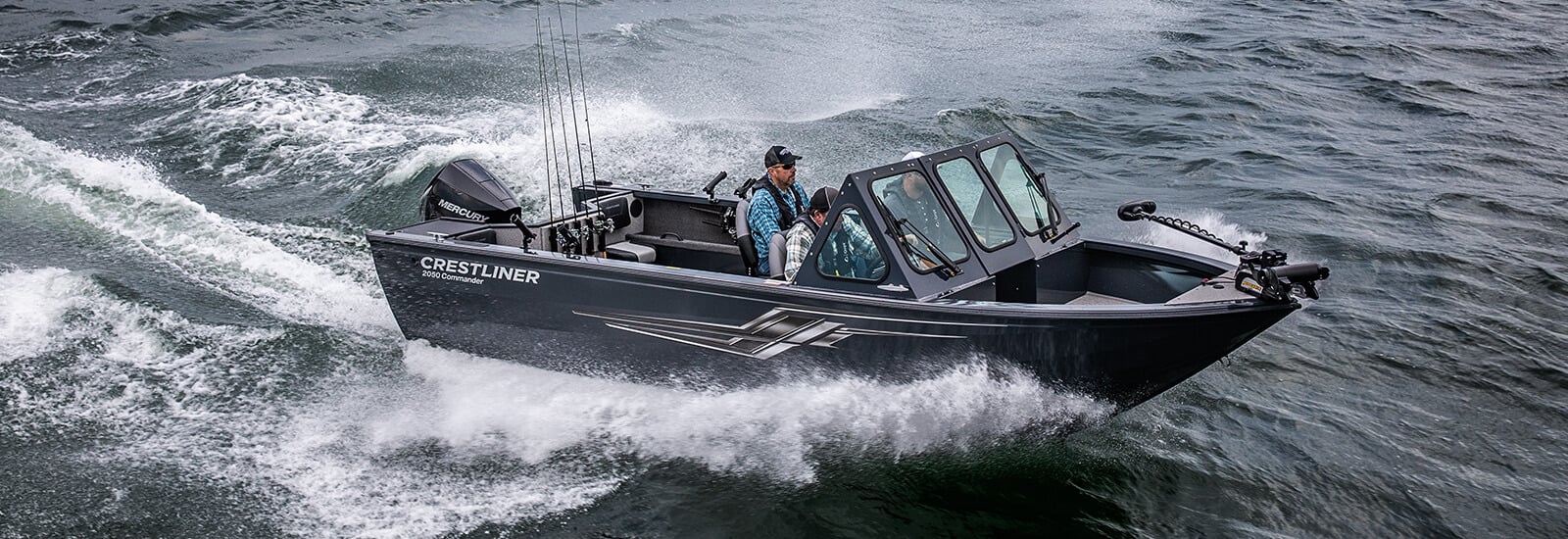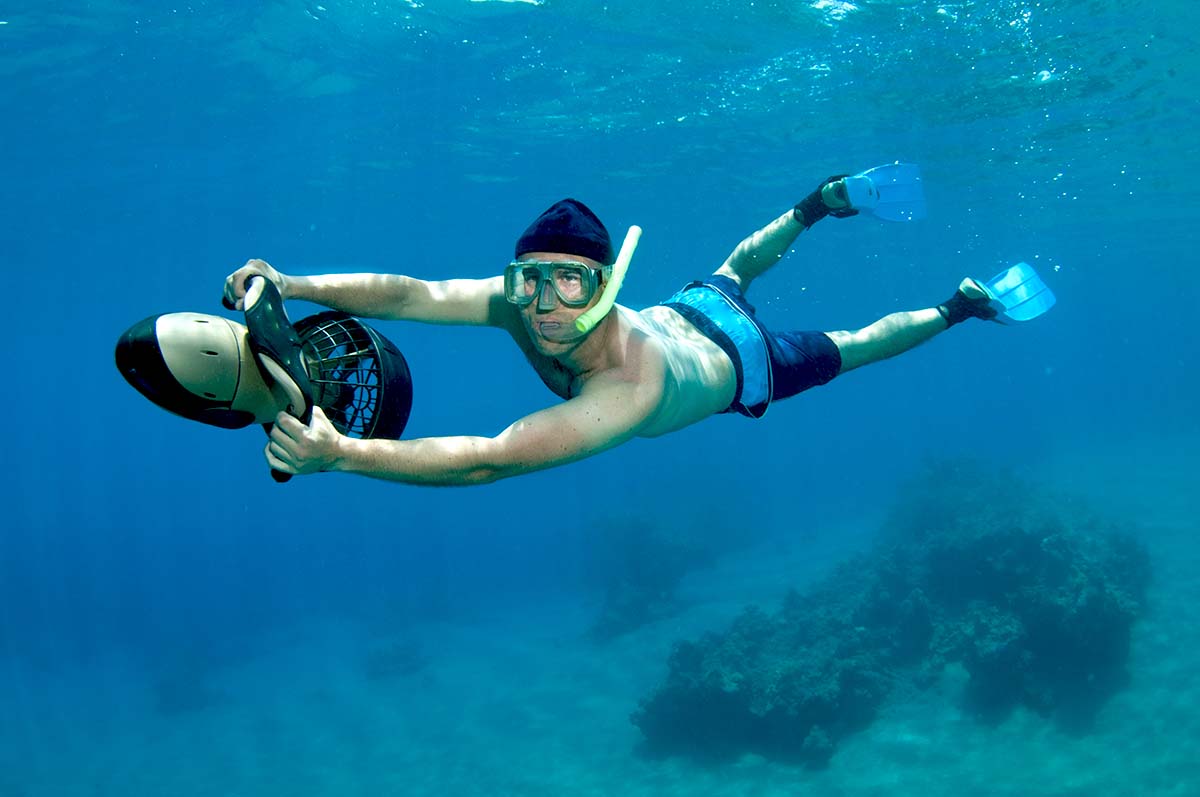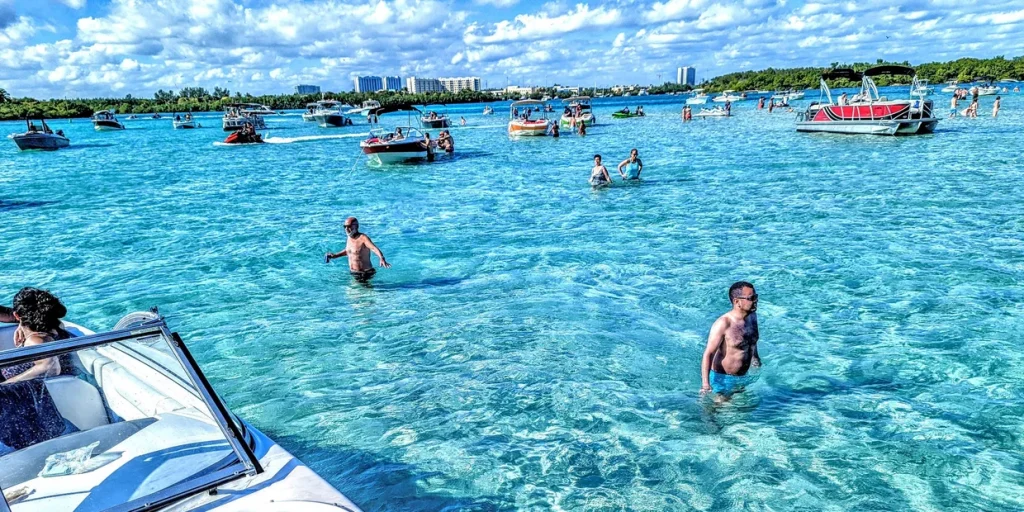
Pogo Boats
Are you ready to discover everything there is to know about Pogo Structures boats? Pogo Structures builds fast sailing boats designed for speed, efficiency, and enjoyment. With over 20 years of experience, the passionate team at Pogo Structures has crafted boats that meet the needs of both racers and cruisers.
One standout feature of these boats is their versatility. For instance, the Pogo 30 offers a perfect balance between offshore sailing and coastal cruising. This boat is ideal for small crews or families who want speed and comfort. Their innovative design and modern build make them a joy to sail.
Consider the Loxo 32, a new-generation cruising motor boat designed to optimize fuel efficiency and performance. Designed with cutting-edge technology, it promises a smooth and quick ride with minimal propulsion power. Pogo Structures continues to refine their models, guaranteeing an exceptional sailing experience for all.
Key Takeaways
- Pogo Structures builds fast and versatile sailing boats.
- The boats are designed for both racing and cruising.
- Advanced technology enhances performance and efficiency.
History and Philosophy of Pogo Structures
Pogo Structures, a prominent French boatbuilder, has a rich history and a clear philosophy focused on innovation and quality. The company was founded in Brittany by Christian Bouroullec, whose vision shaped its growth and reputation.
Foundation and Evolution
Pogo Structures was founded in 1987 by Christian Bouroullec in Quimper, Brittany. Initially, the company was a small yard with a focus on designing and building fast sailing boats. Their first major move came in 1990 when they relocated to Combrit-Sainte-Marine, allowing for expansion and increased production.
They became renowned for their Pogo line of racing and cruising sailboats. Over the years, the shipyard has delivered over 900 boats. Notably, in 2013, they launched the Pogo 30, a boat reflecting their dedication to performance and quality. The average production has been around 55 boats per year recently, a testament to their efficiency and market demand.
Christian Bouroullec's Vision
Christian Bouroullec envisioned Pogo Structures as a leader in the sailing industry. His passion for sailing and innovation has driven the company to focus on building high-performance boats that are accessible to all. Bouroullec's approach has always been about combining speed, safety, and enjoyment in sailing.
He brought a team of skilled professionals who share his passion. This shared vision is evident in the continuous development of new models like the Class40 for offshore racing. The philosophy extends beyond just building boats; it’s about creating a sailing experience that is modern, fast, and enjoyable. The launch of their first motorboat in 2017 also showed Bouroullec’s willingness to explore and expand into new markets.
Design and Construction
Pogo Structures boats are known for their advanced design and construction techniques, ensuring excellent performance and durability. These boats feature innovative hull designs, carbon masts and rigging, and use advanced materials like vinylester and resin-infused structures. The shipyard employs cutting-edge manufacturing methods to produce some of the best sailing and power yachts on the market.
Hull Design Principles
Pogo Structures focuses on creating hull designs that maximize speed and stability. Their hulls are often characterized by a wide beam and hard chines, which improve performance and interior space. These design choices help in maintaining speed even in rough conditions. Whether it's the Pogo 30 or larger models like the Pogo 50, the emphasis on hull shape ensures minimal drag and optimal sailing efficiency.
The lifting keel is a notable feature in their boats, providing flexibility for both offshore and coastal sailing. This versatile structure allows the boat to perform well in various sailing conditions.
Carbon Mast and Rigging
Using carbon masts in their yachts, Pogo Structures ensures that their boats are both light and strong. Carbon masts reduce the overall weight of the boat, which helps in achieving higher speeds and better maneuverability. This material is also highly durable, offering long-term reliability.
Similarly, the rigging is designed to withstand high stress, ensuring safety during high-speed sailing. The combination of carbon masts and superior rigging materials makes Pogo Structures boats highly competitive in racing environments like the Mini Transat.
Vinylester and Resin-Infused Structures
Pogo Structures employs vinylester and resin-infusion techniques to create strong and lightweight boats. Vinylester resin, known for its excellent resistance to water and chemicals, ensures longevity and durability. This material choice helps in preventing osmosis, a common issue in marine environments.
The resin-infusion process used in constructing boats like the Pogo 50 allows for consistent quality and reduces the overall weight. This technique ensures that the resin is evenly distributed, leading to a stronger and stiffer structure without adding extra weight.
Shipyard Manufacturing Techniques
Pogo Structures is dedicated to high-quality manufacturing processes in their shipyard. They employ advanced techniques and state-of-the-art technology to ensure precision and quality. The use of CNC machines for cutting and preparing materials guarantees that each component fits perfectly.
The shipyard staff consists of experienced craftsmen who are passionate about sailing. Their expertise ensures that each boat is built to the highest standards. This meticulous attention to detail and commitment to quality make Pogo Structures boats a top choice for sailors around the world.
By focusing on these key aspects, Pogo Structures delivers boats that are not only fast and efficient but also reliable and durable. Their innovative design and construction techniques set them apart in the competitive world of yacht building.
Performance Aspects
Pogo Structures boats are known for their remarkable speed, efficient power usage, and innovative designs. Each model is crafted to offer excellent performance in various sailing conditions.
Speed and Power
Pogo boats are engineered for speed and efficiency. The Pogo 44 has been described as an ultra-fast cruiser, focusing on providing thrilling sailing experiences. These boats often feature powerful sail plans and lightweight hulls, allowing them to perform exceptionally well even in light winds.
The Loxo 32 is a unique entry into the power cruiser market with efficient fuel consumption, making it ideal for longer voyages without frequent refueling stops.
Weight and Displacement
Pogo Structures utilize advanced materials and building techniques to keep their boats light without compromising strength. For example, the Pogo 30 has a displaced-to-length ratio that hints at its ability to perform like a dinghy, offering a blend of lightness and stability.
The Pogo 50, discussed in various sailing forums, highlights impressive weight-to-power ratios, which contribute to its agility and speed.
Draft and Keel Design
The keel designs of Pogo boats play a crucial role in their performance. The Pogo 30, for instance, features a lifting keel that adds versatility by allowing shallow water navigation.
This design is beneficial for sailors who need to navigate both deep and shallow waters without sacrificing performance. The draft and keel designs ensure that these boats remain stable and efficient in diverse sailing conditions.
Stability and Upwind Performance
Pogo boats are built with stability in mind. They often feature broad beams and hard chines, which enhance stability and minimize heeling. The innovative hull shapes ensure that boats like the Pogo 44 remain steady even under heavy sails.
Their upwind performance is particularly notable, with refined sail plans and balanced hull designs enabling them to point high and maintain speed. Additionally, well-designed rigging and sail systems contribute to their superior upwind capabilities.
Model Range and Specifications
Pogo Structures offers a range of sailing yachts tailored to various needs, from personal cruising to intense offshore racing. Each model is designed with specific features that cater to different types of sailors and sailing conditions.
Pogo 30: The Compact Cruiser
The Pogo 30 is a 30-foot fast cruising sailboat designed by Finot Conq Architectes. This model has been in production since 2013. The Pogo 30 features an L-shaped fin keel, providing a balance of performance and affordability.
Multiple keel options, including both fin and swing keels, allow versatility in various sailing conditions. Its hull is made from glass composite, enhancing durability and lightweight performance. The Pogo 30 is ideal for small crews or family sailing, offering a blend of comfort and speed.
Pogo 36: Balance of Comfort and Speed
The Pogo 36 expands on the success of the Pogo 30 but with increased length and beam for enhanced onboard living. The model is designed for both swift offshore sailing and comfortable coastal cruising.
With an LOA of around 36 feet, this yacht offers a spacious cockpit and well-appointed interior. The use of hard chines increases the hull's stability, making it efficient in harsh conditions. Built with high-quality glass composite materials, the Pogo 36 is known for its reliable performance and durability, appealing to more seasoned sailors.
Pogo 40: Embracing Offshore Racing
The Pogo 40 is crafted for those seeking the thrill of offshore racing. At 40 feet in length, this model offers a robust structure and advanced sail handling capabilities.
Focused on performance, it includes features like a deep draft fin keel and powerful sail area. The Pogo 40 is engineered to withstand tough ocean conditions, making it a preferred choice for competitive sailors. Its construction ensures speed and stability, meeting the rigorous demands of long-distance racing.
Class 40: The Pinnacle of Single-Handed Racing
The Class 40 is designed purely for single-handed or limited-crew offshore racing. This model epitomizes speed and agility with its innovative design and cutting-edge materials.
An LOA of approximately 40 feet, combined with a moderate beam, provides a balance between speed and control. These yachts are known for their high performance and have a reputation for winning races. Built for serious racers, the Class 40 incorporates advanced sailing technologies and features for maximum efficiency and competitiveness.
Advantages of Light and Planing Hulls
Light hulls and planing hulls offer several benefits for boat performance, particularly in terms of speed, maneuverability, and efficiency. These designs are particularly advantageous in light winds and benefit from wide beams and chines.
Performance in Light Winds
Light hulls perform exceptionally well in light airs. When the wind is gentle, a lighter boat needs less force to move. This translates to higher speeds and better responsiveness in mild conditions.
Planing hulls, due to their design, rise to the surface of the water, reducing drag. This makes them faster even when the wind isn't strong. They can accelerate quickly, making them ideal for short bursts of speed.
The material used to construct these hulls often contributes to their lightness. Advanced materials like composites enhance performance by reducing weight. For example, the electric Pogo 30 gains a significant weight advantage without a heavy diesel engine, improving overall speed and handling in light winds.
Advantages of Wide Beams and Chines
Wide beams and chines are beneficial for stability and interior space. A wide beam provides a broader base, making the boat more stable, especially when navigating turns or rough waters.
Chines, or the angles where the bottom of the hull meets the sides, help with planing. They create lift as the boat accelerates, pushing it higher on the water’s surface and reducing drag. This lift is crucial for maintaining high speeds and efficiency.
Moreover, boats with wide beams have more deck and living space. This added space is useful for long trips, providing comfort and room for passengers and gear. The Loxo 32 benefits from these design features by offering a spacious layout while maintaining efficient performance.
Using wide beams and chines in boat design not only improves speed and stability but also enhances comfort for those aboard. This balance of performance and usability makes them a popular choice for many boat enthusiasts.
Cruising Features and Amenities
Pogo Structures boats stand out thanks to their thoughtful design and practical features. These boats offer optimal comfort and impeccable ergonomics, ensuring a pleasant cruising experience.
Cockpit and Deck Ergonomics
The cockpit of Pogo Structures boats is designed for efficiency and ease. Spacious layouts allow for active maneuvering, whether sailing solo or with a crew. Controls and instruments are positioned to be within easy reach, providing excellent control and safety.
Deck spaces are equipped with non-slip surfaces, enhancing safety when walking around. Seats and handrails are strategically placed to offer stability and comfort. Additionally, the wide deck layout makes it easier to move around, even in choppy waters, ensuring a smooth and enjoyable experience.
Interior Comfort and Layout
Inside, Pogo boats focus on maximizing space and comfort. The saloon is open and inviting, with plush seating that encourages relaxation. The galley is compact yet fully equipped, featuring modern appliances and ample storage, enabling easy meal preparation underway.
The sleeping quarters are designed for comfort, with soft bedding and personal storage space. Ergonomic design extends into these spaces to provide better headroom and accessibility. The overall layout aims to create a homey feel, ensuring everyone on board feels at ease during their voyage.
Bright Interiors and Living Spaces
A standout feature of Pogo boats is their bright interiors. Large windows and strategically placed openings in the saloon and other living spaces fill the interior with natural light. This not only improves visibility but also creates a cheerful and open environment.
The forward-facing windows enhance all-round visibility, improving safety and enjoyment while sailing. Efficient use of light-colored materials and finishes helps to further amplify the feeling of space inside the boat. With these thoughtful design choices, every voyage becomes a more pleasant and refreshing experience.
Technological Enhancements
Pogo Structures boats are known for their cutting-edge technology. These boats include features such as advanced keel and rudder systems and sophisticated autopilot and navigation software.
Innovative Keel and Rudder Systems
Pogo Structures boats often feature lifting keels and modern rudder systems. The lifting keel allows the boat to reduce its draft, making it easier to navigate in shallow waters. This is especially important for coastal cruising and racing.
The latest generation of rudder systems in Pogo boats is designed for precision and stability. These rudders provide better handling and responsiveness. The combination of lightweight materials and advanced engineering allows Pogo boats to perform efficiently in different sea conditions.
Autopilot and Navigation Software
Pogo Structures boats are equipped with state-of-the-art autopilot systems. These systems are crucial for short-handed offshore sailing. They allow sailors to maintain course with minimal manual adjustments. This is particularly useful during long voyages when constant manual steering is impractical.
The navigation software in Pogo boats integrates with various sensors and data sources, providing real-time information on the boat's position, speed, and heading. This ensures that sailors can make informed decisions quickly. The software is designed to be user-friendly, allowing both novice and seasoned sailors to navigate confidently.
Sailing Dynamics
The sailing dynamics of Pogo boats make them stand out due to their unique sail area and configuration, which are tailored for speed and efficiency. Users will find details on how asymmetric and symmetric spinnakers enhance performance, especially in downwind conditions.
Sail Area and Configuration
Pogo boats are designed with a large sail area, allowing them to catch more wind and sail faster. The sail is configured for optimal performance whether offshore sailing or coastal cruising. The boats typically feature a mainsail and a headsail, both designed to harness maximum wind power efficiently.
This configuration ensures the boat is agile and responsive. The large sail area amplifies speed and control, making it ideal for both novice and seasoned sailors. Utilizing lightweight materials, the sails provide a balance of strength and flexibility, ensuring the boat performs well even in varying wind conditions.
For example, the Pogo 30 features a high-performance sail setup. This includes a lifting keel to further enhance stability and responsiveness, making it versatile for both offshore sailing and coastal adventures.
Asymmetric and Symmetric Spinnakers
Spinnakers play a crucial role in the performance of Pogo boats, particularly when sailing downwind. Asymmetric spinnakers are favored for their ease of handling and efficiency. They are ideal for broader ranges of downwind angles, allowing for swift and smooth sailing.
These spinnakers are designed to be lighter and more efficient, making them perfect for races and long voyages. They enhance the boat's downwind capabilities, providing an edge in speed and maneuverability.
On the other hand, symmetric spinnakers are used for deep downwind sailing. They are balanced and provide stability when the boat is positioned directly downwind. While they require more skill to operate, they can significantly boost performance in the right wind conditions.
Both types of spinnakers are crafted to optimize the boat's sailing dynamics. The choice between asymmetric and symmetric spinnakers can depend on specific sailing needs, such as race conditions or cruising preferences. For example, a Pogo 44 might benefit from both types in different scenarios to maximize its thrilling sailing experience.
Ownership and Practical Considerations
Owning a Pogo Structures boat involves various factors including costs, long-term value, and maintenance. Understanding these elements helps potential owners make informed decisions.
Cost and Long-Term Value
Pogo Structures boats, particularly models like the Pogo 44 and Pogo 30, represent a considerable investment. Initial prices can range significantly depending on the model, features, and customization. For instance, the Pogo 44 is known for its high performance and unique design, making it one of the more expensive choices.
Long-term value is a key consideration. Pogo boats are designed for speed and durability, which can enhance their resale value. Owners often find that these boats hold their value well due to their excellent build quality and strong reputation in the sailing community.
Additionally, demand for well-maintained Pogo boats remains high, contributing to sustained market value.
Maintenance and Upkeep
Regular maintenance is crucial to keep a Pogo boat in top condition. Essential tasks include checking and maintaining the hull, sails, and rigging. Specific materials used in Pogo boats may require particular care; for example, their lightweight construction means they might need more frequent inspections.
Pogo Structures offers comprehensive support and parts for their boats, making it easier for owners to stay on top of upkeep. Basic upkeep can include routine cleaning, seasonal updates, and specific repairs as needed.
Maintaining a Pogo boat isn’t just about preserving value; it’s also about ensuring safety and performance on the water. Regular care can prevent small issues from becoming significant problems, ensuring many years of enjoyable sailing.
Experiences and Testimonials
Pogo Structures boats boast a strong following, with detailed reviews and personal stories shedding light on the performance, build quality, and user experiences of these vessels. Both professional reviews and owner testimonials highlight their unique characteristics and capabilities.
Yachting World Reviews and Sea Trials
Yachting World has tested various Pogo models, emphasizing their blend of performance and design. The Pogo 30, for instance, combines excellent cruising capabilities with a lightweight structure. This model is noted for its resin-infused, unsinkable build, ensuring safety and durability on the water.
Another key highlight is the Pogo 3, described as a "pocket rocket" for its impressive power-to-weight ratio. Matthew Sheahan from Yachting World found it to be a highly addictive machine, making it suitable for competitive sailing. Sea trials further demonstrated the boat's agility and speed, which are crucial for racing enthusiasts.
Owner Insights and Stories
Owners of Pogo Structures boats often share their passions and experiences. Many highlight the practical design and robust performance of their vessels. One enthusiast, for example, appreciates the blend of speed and comfort in the Pogo 40 S4, which remains a favorite despite its premium price.
Another noteworthy account comes from sailors who value the thorough craftsmanship and solid reputation of Pogo boats. They often regard these vessels as reliable and exciting to sail, inspiring confidence in various weather conditions.
Such testimonials underscore the high regard owners have for their boats' performance and build quality, adding personal context to the brand's strong professional reviews.
Comparative Analysis
Pogo Structures boats are distinct with their high-performance design and suitability for both cruising and offshore sailing. This comparative analysis focuses on how they stack up against other cruising sailboats and within the competitive Class 40 landscape.
Pogo Structures vs Other Cruisers
Pogo Structures emphasizes speed and performance in their cruising sailboats. Unlike traditional cruisers, Pogo boats like the Pogo 44 are designed to offer thrilling sailing experiences. They are ultra-light and stiff, which makes them fast and responsive.
Traditional Cruisers:
- Weight: Heavier, with more focus on comfort.
- Design: Prioritizes stability and ease of handling.
Pogo Cruisers:
- Weight: Lightweight, enhancing speed.
- Design: Focus on performance and agility.
Class 40s Competitive Landscape
In the Class 40s scene, Pogo boats are renowned for their competitiveness. The Pogo 40 S4, for instance, is a prime example of Pogo's ability to blend speed with reliability. Competitors in the Class 40 market must match Pogo's innovation and performance.
Class 40 Characteristics:
- Speed: High due to lightweight and advanced design.
- Technology: Cutting-edge materials and construction techniques.
Pogo 40 S4:
- Performance: Excels in offshore racing.
- Design: Incorporates features that maximize speed without sacrificing durability.
Pogo boats thus represent a distinct niche within both the cruising and racing arenas, providing enthusiasts with thrilling sailing options.
Frequently Asked Questions
Pogo Structures sailboats stand out due to their unique design and performance. They are suitable for both cruising and racing, making them versatile for different sailing needs.
What distinguishes Pogo Structures sailboats from other performance cruisers?
Pogo Structures builds fast sailing boats optimized for short-handed offshore sailing. They use advanced resin infusion technology for durability and lightweight construction.
How does the Pogo 36 perform in offshore sailing conditions?
The Pogo 36 is designed for stability and speed. It's known for its stiff build and light weight, making it suitable for offshore conditions, handling well even in rough seas.
What are the characteristics of the Pogo 44 that appeal to sailors?
The Pogo 44 offers a unique blend of speed and comfort. It has forward-facing windows for good visibility and numerous openings for natural light and airiness, making it a comfortable choice for long voyages.
Can you provide an overview of the used Pogo sailboat market?
Used Pogo sailboats are popular due to their strong reputation. They often retain good value and are sought after by both amateur and professional sailors for their performance and reliability.
What factors contribute to the resale value of a Pogo vessel?
The resale value is influenced by the boat's condition, age, and specific model. Innovations in design and construction standards also play a role, along with the boat's history and maintenance.
Who are the target customers for Pogo Structures sailboats?
Pogo Structures targets sailors who enjoy both cruising and racing. Their boats appeal to those looking for speed, reliability, and the ability to handle diverse sailing conditions.





